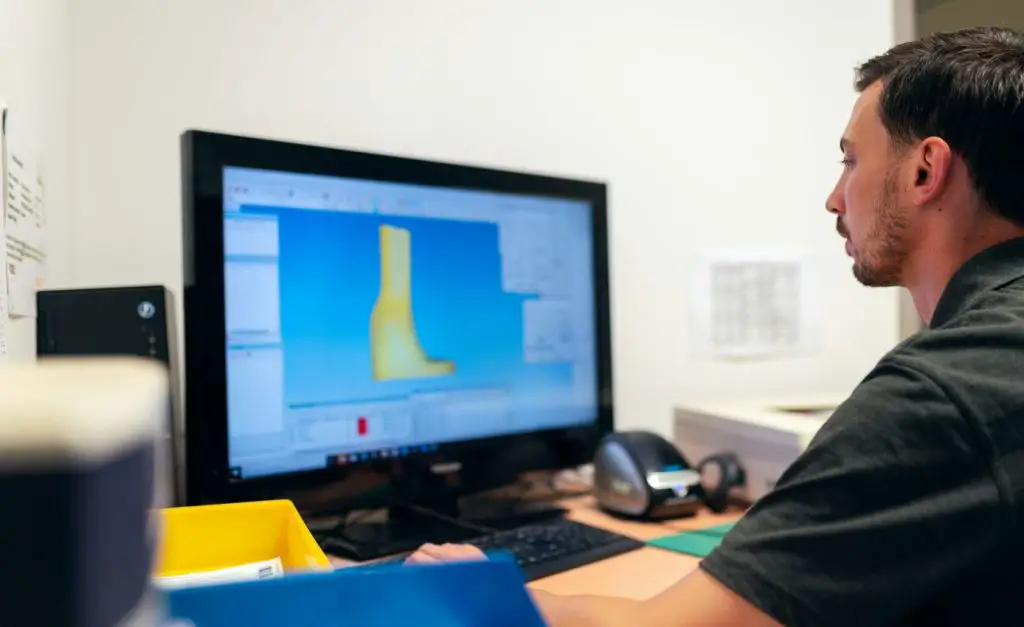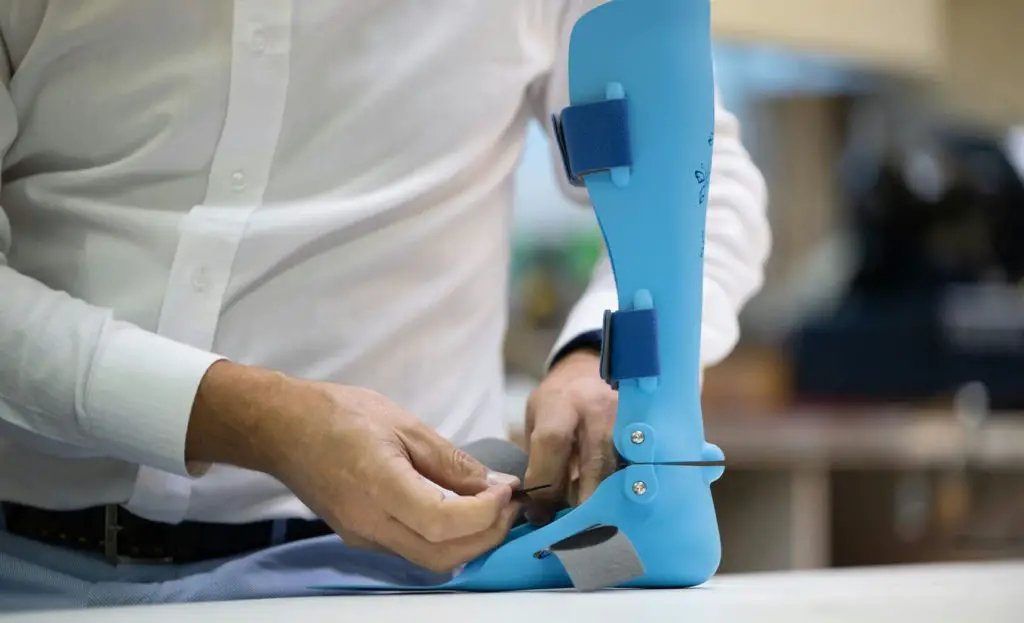You know orthotics are more than shoe inserts if you're considering them. They are custom-made to support and soothe your feet, relieve pain, and manage foot and lower limb disorders.
Choosing the correct orthotics is important for athletes, those with foot problems, and those trying to enhance their daily comfort. Australians can use this advice to choose the right orthotics.
Let's Get Straight To The Point
When selecting orthotics, first understand your needs, considering daily activities, foot health, and shoe types. Those with chronic conditions may require softer, more supportive orthotics, while athletes may need sport-specific designs.
Consult a podiatrist to assess your foot structure and walking patterns, ensuring the right fit and material for your needs. Orthotics come in custom and over-the-counter options.
Custom orthotics offer a precise fit for serious conditions, while over-the-counter ones are cheaper and suitable for mild discomfort. Material choices range from soft (for cushioning) to rigid (for structural support), so select based on your activity and foot issues.
Ensure orthotics fit properly in your shoes, and check if your health insurance covers them. Regular follow-ups with your podiatrist will help maintain their effectiveness and comfort.
Understand Your Needs
Understanding your orthotics needs is crucial to choosing the right options. This core understanding covers daily activities, health issues, and shoe kinds, not only foot pain or discomfort.
Patients with chronic foot problems, including diabetes or arthritis, may need to reduce pressure points, improve comfort, or prevent skin disintegration. For these reasons, orthotics are usually composed of softer, more forgiving materials that cushion and support.
Orthotics can treat structural foot problems such as flat feet, high arches, and foot alignment. They prevent additional deformity and reduce movement pain by dispersing weight over the foot. The correct orthotic can change your walking pattern, relieving foot, ankle, and lower back discomfort.
Athletes and other active people may choose orthotics with improved arch support and force transfer. These orthotics are developed for certain sports to improve performance, avoid injuries, and provide comfort.
The shoes you wear are also important. Orthotics must fit and function with your favourite shoes. An orthotic built for formal shoes will differ from one for sneakers.
Understanding these various demands helps you choose an orthotic that fits your lifestyle. This comprehensive awareness allows you to submit precise information to a healthcare practitioner to help them choose the ideal orthotic for you.

Consult a Podiatrist
Podiatrists concentrate on foot, ankle, and lower limb care; thus, consulting one is essential when contemplating orthotics. A podiatrist can examine your feet and walking or running gait for a complete assessment. This examination determines if orthotics are needed and which type best addresses your needs.
During your appointment, a podiatrist will assess your foot abnormalities, discomfort, and everyday activity. They will also examine your shoe wear patterns to determine foot mechanics and potential issues. This thorough assessment ensures that orthotics are tailored to improve foot function and comfort.
Podiatrists can also help you choose the proper orthotic material and style. They may suggest several sorts if you need orthotics for sports, everyday use, or medical issues.
A podiatrist can also advise you on orthotic care, replacement, and easing into their use. Professional supervision is crucial to ensure that orthotics are effective and do not cause additional issues.
A podiatrist appointment ensures that your orthotics perfectly fit your needs and prevents foot problems from worsening. This proactive approach to foot health can improve your quality of life, making a podiatrist consultation crucial when choosing orthotics.
Choose Between Custom and Over-the-Counter Orthotics
Selecting orthotics involves deciding between bespoke and over-the-counter solutions. Each type serves different needs and comes with its own set of benefits.
1. Custom Orthotics
Your foot's unique shapes are used to construct custom orthotics. A podiatrist uses 3D scanning to measure your feet during a consultation. This ensures that the orthotics fit precisely and treat biomechanical concerns like irregular foot motion and pressure spots. Custom orthotics help patients with severe biomechanical abnormalities, complicated foot ailments, or no alleviation from ordinary inserts.
Custom orthotics' ability to fit your foot is its main benefit. They may be made from different materials according to your foot health, lifestyle, and activity level. Customisation adjusts density, cushioning, and support for specific comfort and protection. Custom orthotics are more expensive, but their longevity and exact fit frequently justify the cost, especially for people who need foot support or pain treatment.
2. Over-the-Counter Orthotics
Many pharmacies, shoe stores, and internet retailers sell over-the-counter orthotics. These implants are manufactured and fit various feet rather than an individual's foot profile. They are cheaper than custom-made solutions and an excellent first choice for slight pain or extra assistance for daily tasks.
Although not customised, many over-the-counter orthotics are composed of high-quality materials and can help mild arch discomfort or heel pain. Their fast availability makes them useful for individuals who need relief. However, since they are not customised, over-the-counter orthotics may not fit or assist complicated foot problems.
3. Making the Right Choice
Custom or over-the-counter orthotics rely on your lifestyle, money, and foot problem severity. Custom orthotics are recommended for serious foot issues or medical disorders. Over-the-counter products may be sufficient for minor concerns or general help. A podiatrist can help you make the greatest foot and health decisions in any situation.
Consider the Material
Orthotics' comfort, usefulness, and longevity depend on their material. Material choices range from strong support for structural foot issues to gentle cushioning for sensitive feet.
1. Soft Orthotics
Soft orthotics are made to absorb stress, distribute pressure, and improve foot comfort. They are constructed of soft foam, gel, or cushioned polymers to reduce foot impact. This orthotic is perfect for diabetics, arthritis sufferers, and people with painful calluses and bunions since the soft material relieves pressure points and cushions.
Elderly users who have lost protective fatty padding on their feet may benefit from soft orthotics. Flexible and supple, these orthotics can make daily tasks more pleasant and decrease foot problems from walking and standing.
2. Rigid Orthotics
Carbon fibre or hard plastic rigid orthotics manage foot joint function and mobility. They can also stabilise the foot and ankle to rectify aberrant walking patterns and treat lower back, hip, and leg issues.
These orthotics concentrate on support and usefulness rather than cushioning. They are particularly useful for individuals who require precise correction for foot alignment, such as those with severe overpronation or supination. Because of their firmness, they are best used in walking or dress shoes with closed toes and low heels.
3. Semi-Rigid Orthotics
Semi-rigid orthotics balance cushioning and support, making them ideal for athletes. They usually consist of soft layers reinforced with stiff ones. The orthotic is flexible and comfortable but rigid enough to guide the foot.
These orthotics support the foot and allow dynamic mobility, making them ideal for sports. They provide remedial support for youngsters with foot abnormalities while accommodating their development and activities.
4. Choosing the Right Material
When choosing a material, consider your daily activities, foot issues, and what you need from an orthotic—support, cushioning, or both. Discuss these choices with your podiatrist to determine which materials are most beneficial for you. This personalised approach guarantees that your orthotics fit properly and meet your health demands, improving mobility and quality of life.
Factor in Your Footwear
Orthotics must fit properly in your shoes to be effective; therefore, consider your shoes when choosing them. The perfect fit guarantees comfort and proper orthotic alignment, support, and pressure relief.
The effectiveness of orthotics depends on your shoes. For instance, bulkier or athletic orthotics may not fit in narrow or high-heeled shoes. However, shoes with detachable insoles or deeper toe boxes may allow for better orthotic fitting. This compatibility prevents shoe congestion, which can cause additional pressure spots and pain, offsetting the orthotics' advantages.
Also important is the shoes' intended use. Running, walking, work, and formal shoes have distinct features and space allowances. An orthotic built for running shoes may be overly flexible or need more control for formal shoes. If you stand or walk a lot, your orthotics should support and cushion you for lengthy durations.
Remember to bring your most used shoes to the podiatrist's appointment. This allows them to immediately evaluate the orthotics' fit with the shoes and make any required modifications. You may require different orthotics to maintain your foot health in any shoe.
These considerations can help maximise your orthotics' foot health and comfort benefits. Not ensuring the orthotics and footwear function properly together might lead to poor outcomes and pain.

Check for Health Insurance Coverage
Checking health insurance coverage before buying orthotics can drastically alter the cost. Many private health insurance policies in Australia include podiatrist treatments, including orthotics if a podiatrist recommends. This coverage can vary greatly between insurers and insurance plans, so check your policy details or contact your provider to find out what's covered and how much.
Knowing your insurance advantages might also assist you in picking orthotics. Some insurance coverage covers bespoke orthotics but not over-the-counter ones, or they may pay a considerable percentage if they are medically essential. A certified podiatrist or other medical expert may be needed to document 'medically required' under different rules.
Insurance plans may also need a general practitioner reference or podiatrist diagnosis to cover orthotics. Budgeting for future expenditures may require considering how often you can update your orthotics and still obtain coverage.
Additionally, if your insurance covers orthotics, claim filing may need comprehensive receipts, medical prescriptions, or evidence of payment. Preparing this information will speed up the process and guarantee you obtain qualifying reimbursements.
You must consult your health insurance provider before choosing orthotics. It manages finances and informs you of your rights, helping you optimise health insurance advantages.
Follow Up and Adjustments
Getting modifications from your podiatrist after your orthotics is essential to their proper use. When you first use new orthotics, your feet and body acclimatise to the new support and alignment. Note any discomfort or concerns and discuss them with your podiatrist.
Your podiatrist can change orthotics depending on your input. The material thickness or density may be changed to reduce pressure points or provide support. If your orthotics create new or increasing discomfort, they may not align with your foot's natural shape or provide enough support.
Your podiatrist can also check orthotic wear with regular follow-ups. Even high-quality materials deteriorate and lose support over time. During these checkups, the podiatrist can determine if the orthotics need to be repaired or updated to provide maximum support and comfort.
As your weight or activity varies, so may your orthotic demands. Regular appointments ensure your orthotics fit your changing demands. You may require different orthotics if you start a new sport or drastically modify your exercise level.
Regularly seeing your podiatrist and attending appointments helps maintain your orthotics and avoid future foot issues. By adjusting early and keeping the appropriate fit, you may improve foot health, comfort, and mobility.
Conclusion
Choosing the correct orthotics improves foot health, comfort, and well-being. Right foot support is important in Australia, where active lifestyles are common. The appropriate orthotics may support and relieve foot ailments, increase sports performance, or make daily life more comfortable.
Remember to determine why you need orthotics and what you want to achieve. Having a podiatrist analyse your feet and lifestyle might help you find a customised solution. Your foot problems and needs will determine whether you choose bespoke or over-the-counter orthotics.
Orthotics should match your activity level and shoe style for comfort and functionality. Assessing your health insurance coverage might also help you afford orthotics. Finally, follow-up sessions and modifications are essential to keep your orthotics working.
These measures guarantee that your orthotics investment pays off, improving mobility, discomfort, and quality of life. Remember, the appropriate orthotics prevent and repair issues, enabling you to enjoy the Australian outdoors comfortably.
Frequently Asked Questions
Custom orthotics are made to fit your foot's unique contours; over-the-counter orthotics are pre-made and can fit a variety of foot types; and semi-rigid orthotics combine soft and hard materials to provide balance and support, especially for athletes.
Orthotics may help if you have flat feet, high arches, plantar fasciitis, or chronic foot, leg, or back discomfort. Since podiatrists can evaluate your feet and walking style, they are the ideal source for orthotic advice.
Australian private health insurance policies often cover orthotics if a podiatrist prescribes them for a foot issue. Contact your insurance provider to learn about your plan's coverage.
Not all orthotics fit all shoes. Orthotic fittings should take into account your most-worn shoes. Slim-fitting dress shoes may need different orthotics than sporting shoes. During the appointment, discuss your shoe preferences with your podiatrist to ensure your orthotics suit your favourite shoes.
The material, usage frequency, and wearer's activity level affect orthotics' longevity. Annual podiatrist checks should identify if orthotics require changes or replacement. If you experience discomfort or changes in your walking pattern, make a consultation sooner to see if your orthotics are still appropriate.

